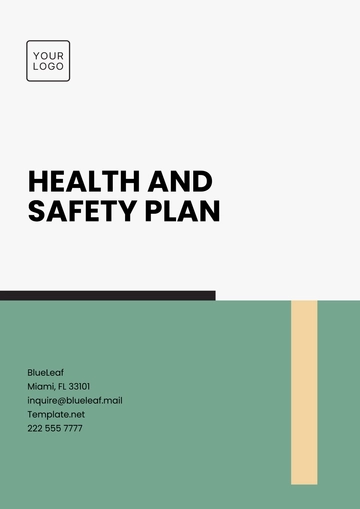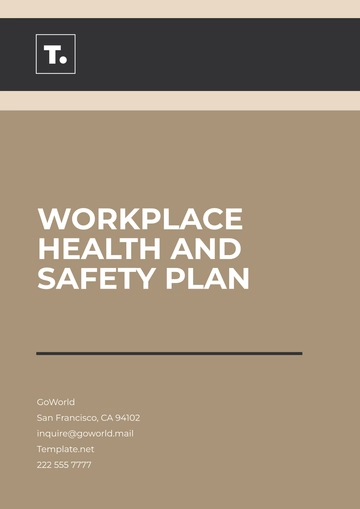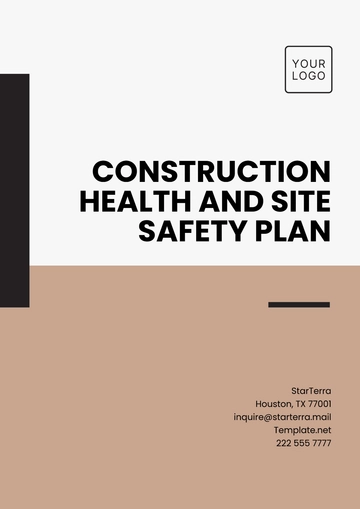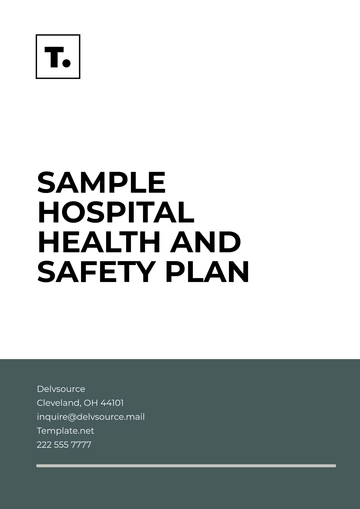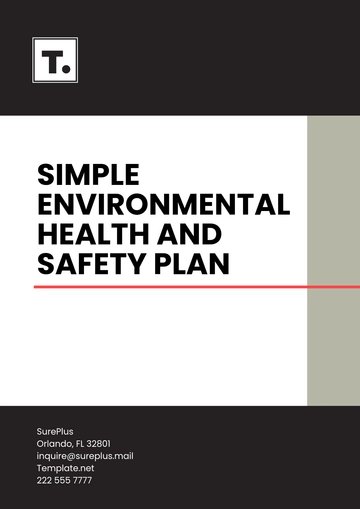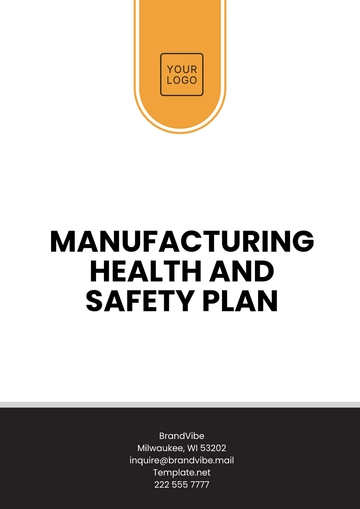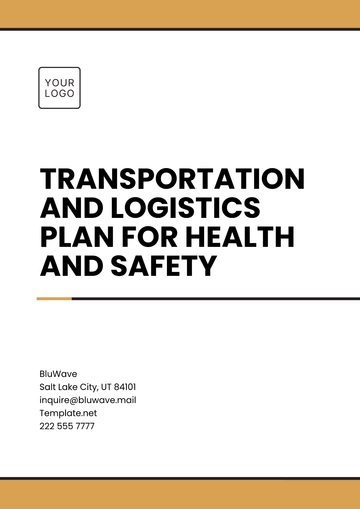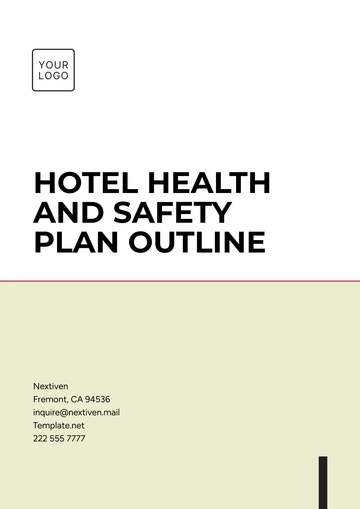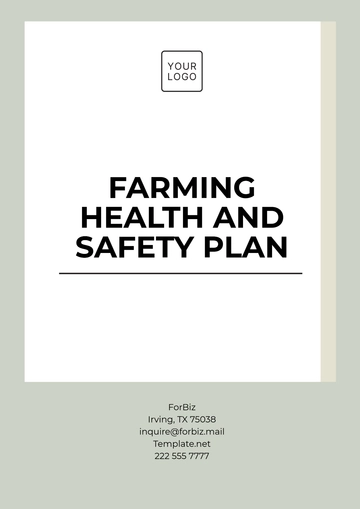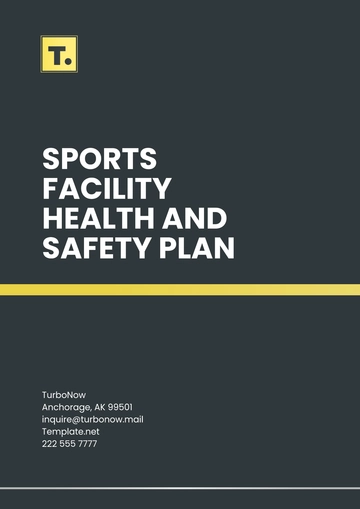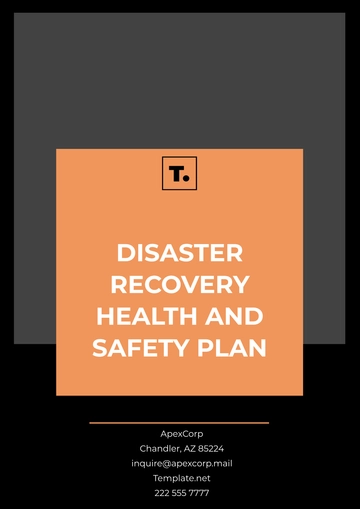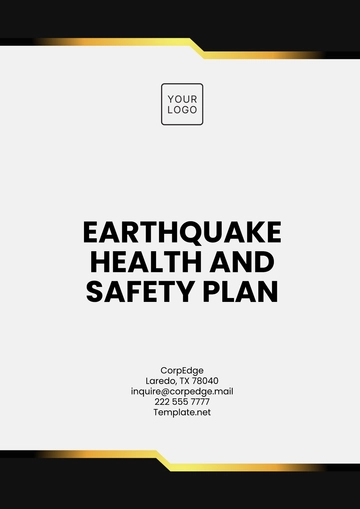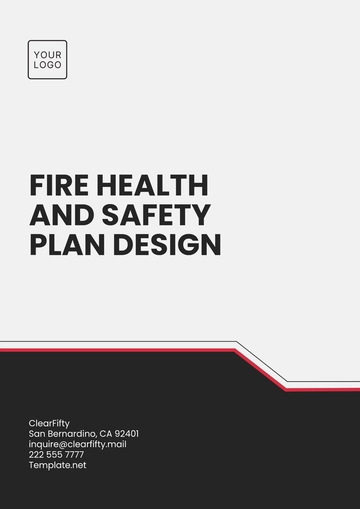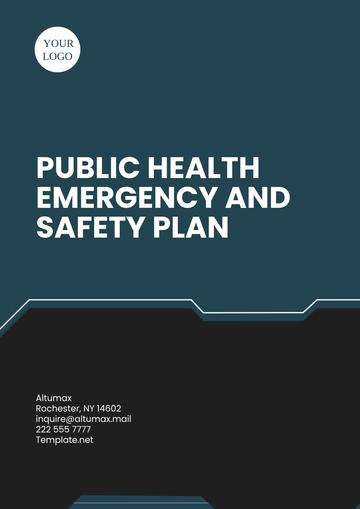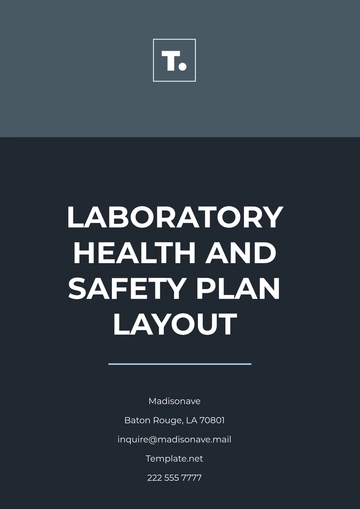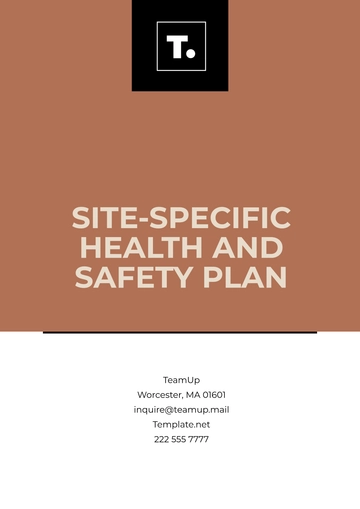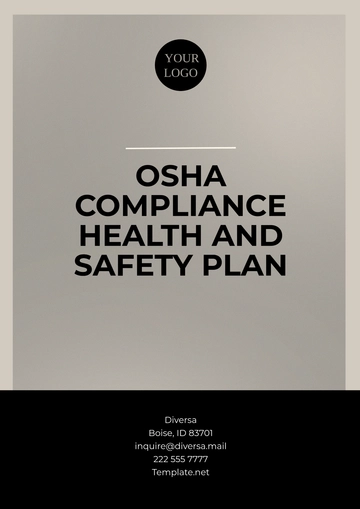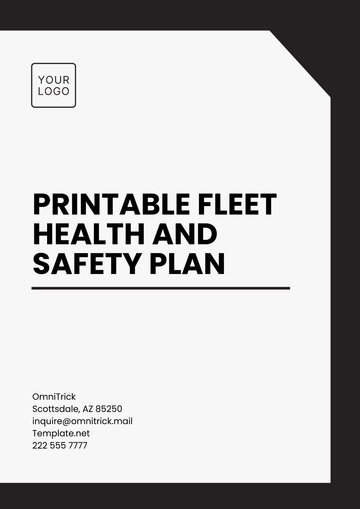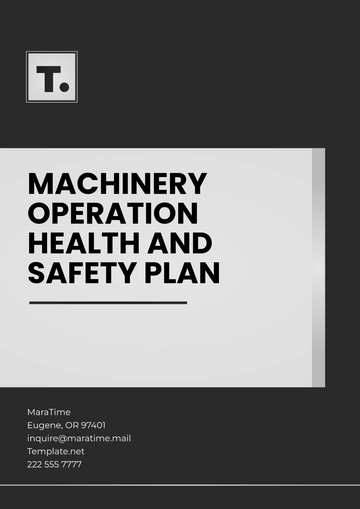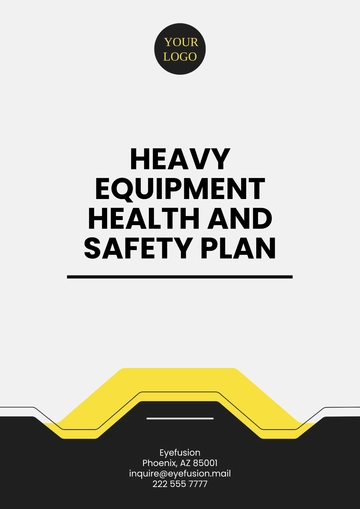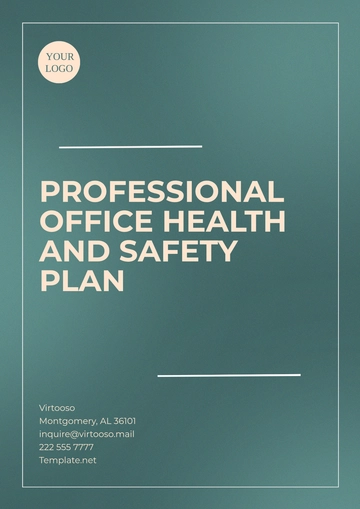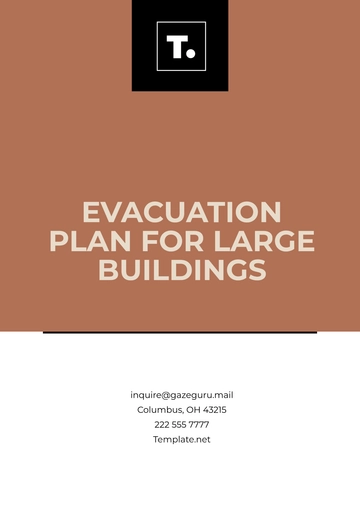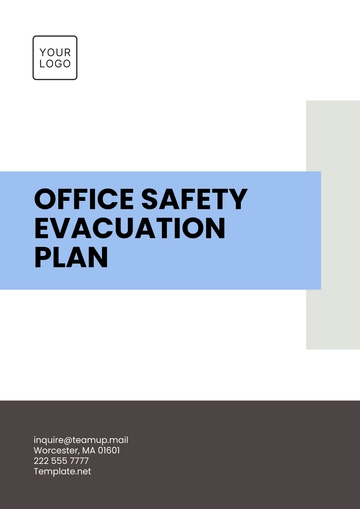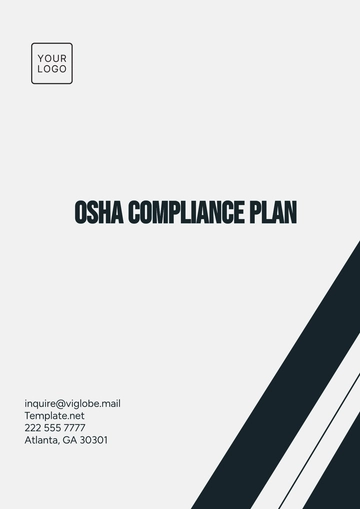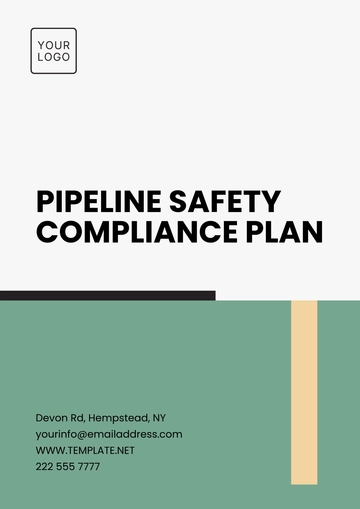Free Health & Safety Awareness Monitoring Plan
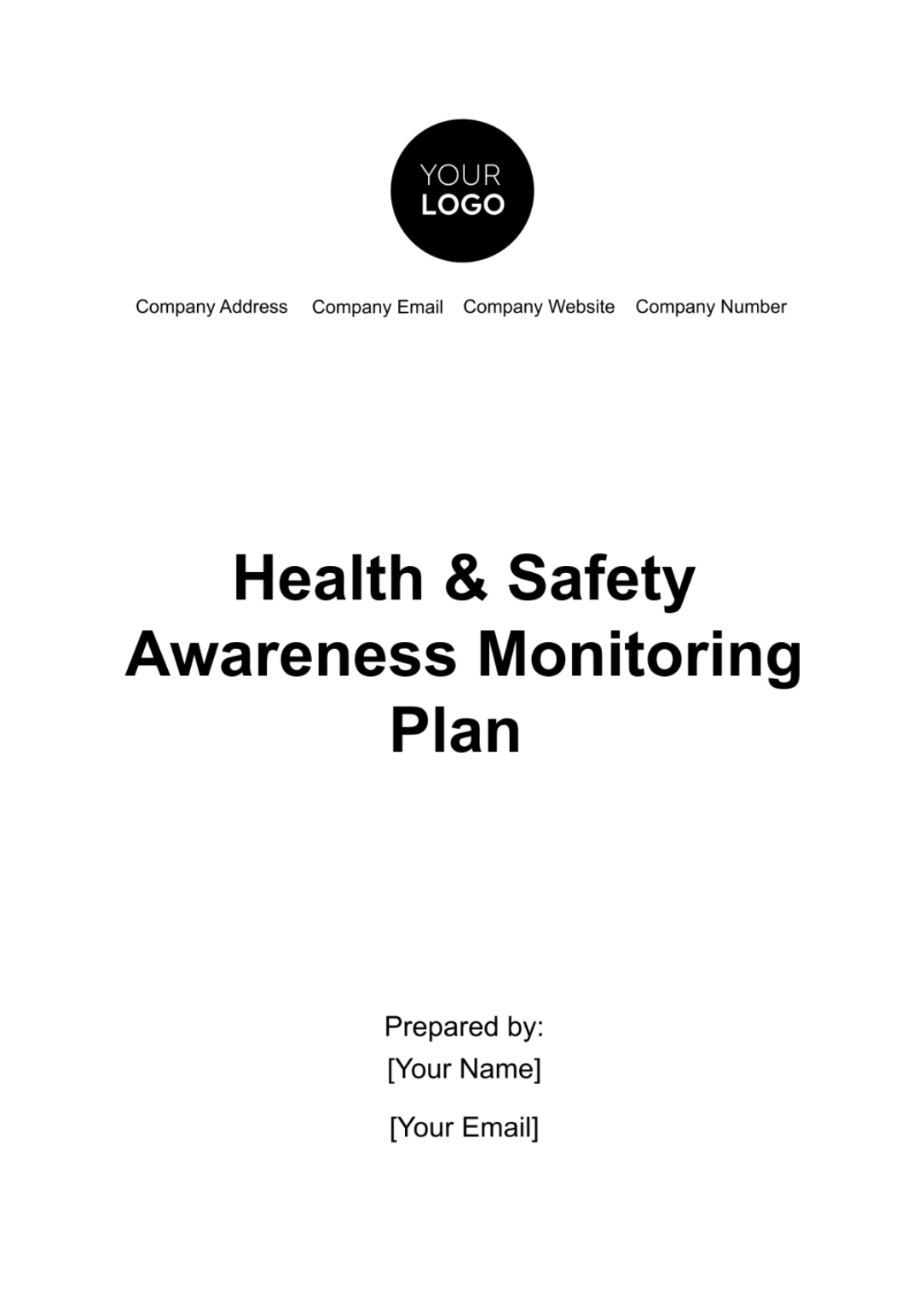
I. Introduction
The Health & Safety Awareness Monitoring Plan is a foundational document of [Your Company Name], reflecting our unwavering commitment to creating a safe and healthy work environment. This plan is not merely a compliance document but a proactive approach to identifying, assessing, and mitigating potential hazards in the workplace. It serves as a guideline for our employees, contractors, and visitors, ensuring that everyone is aware of their responsibilities and the procedures in place to protect their health and safety.
In addition to meeting legal requirements, this plan is a testament to our organizational values that prioritize the well-being of all stakeholders. By implementing this plan, we aim to not only prevent accidents and illnesses but also foster a culture where safety is ingrained in every aspect of our operations.
II. Objectives
Alongside the primary objectives, this plan aims to empower every individual in [Your Company Name] with the knowledge and tools to actively contribute to a safe working environment. We understand that safety is a collective responsibility, and every member of our team plays a crucial role in maintaining and enhancing our safety standards.
Further, this plan aims to establish a transparent and open communication channel for health and safety concerns. We encourage all employees to voice their concerns and suggestions regarding workplace safety, thereby creating an inclusive and proactive safety culture.
III. Scope
The scope of this plan extends beyond the physical boundaries of [Your Company Name]'s facilities. It encompasses all aspects of operations, including off-site activities, business travel, and remote work arrangements. This comprehensive coverage ensures that our commitment to health and safety is ubiquitous, irrespective of the location or nature of work.
In addition to covering various locations and scenarios, this plan also addresses the diverse nature of risks associated with different departments and job functions. From office environments to manufacturing floors, each setting has its unique set of challenges, and this plan provides tailored strategies to address them.
IV. Health & Safety Policy Statement
The Health & Safety Policy Statement is a declaration of our dedication to maintaining a hazard-free workplace. It is a commitment from the highest levels of management, cascading down to every individual in the organization. This statement is not just a formal requirement but a reflection of our ethical responsibility towards our employees, customers, and the community.
This policy is regularly reviewed and updated to reflect the evolving nature of our work and the external environment. It is a living document that adapts to new challenges and opportunities in maintaining workplace safety.
V. Roles and Responsibilities
In [Your Company Name], every team member, from the executive to the newest hire, plays a crucial role in maintaining a safe work environment. Employees at all levels are expected to actively participate in safety initiatives, report potential hazards, and adhere to established safety protocols. They are also encouraged to contribute ideas for improving these protocols.
a. Team Leaders and Supervisors
They have additional responsibilities, including ensuring their teams are trained, conducting regular safety briefings, and acting as first responders in case of an incident. They are crucial in maintaining the safety culture at a team level, serving as role models for safety compliance and awareness.
b. The Health & Safety Officer
This role is multifaceted. They are responsible for staying abreast of legal and regulatory changes, advising management on compliance matters, and leading the development of safety training materials. They also analyze incident reports to identify patterns and areas for improvement and coordinate with external health and safety agencies as necessary.
VI. Risk Assessment and Management
Our approach to risk assessment and management is dynamic and data-driven. We regularly conduct workplace audits to identify new risks, especially when introducing new equipment, substances, or processes. We also solicit employee input regularly, as they often have the closest view of potential hazards in their work areas.
When a new risk is identified, we use a risk matrix to evaluate its severity and likelihood, which guides our decision-making process regarding control measures. These measures are tailored to the specific nature of the risk, ranging from engineering solutions to administrative changes, and are always implemented with an eye toward practicality and effectiveness.
Regular reviews ensure that these measures remain relevant and effective. We also conduct 'what if' analyses to prepare for potential future scenarios, ensuring our risk management strategies are robust and forward-thinking.
VII. Training and Awareness
Our training programs are designed to cater to different learning styles and job-specific requirements. For example, office staff receive training on ergonomic practices and emergency evacuation procedures, while factory workers might receive more in-depth training on machinery safety and chemical handling.
We regularly evaluate the effectiveness of our training programs, using both qualitative feedback from participants and quantitative measures such as post-training assessments. This allows us to continuously improve our training content and delivery methods.
Our awareness campaigns extend beyond the workplace. For example, we run periodic health and wellness programs, which include topics like stress management and healthy living, recognizing that a healthy workforce is a safe workforce.
VIII. Incident Reporting and Investigation
a. Incident Reporting System
This is designed to be user-friendly and accessible, encouraging prompt and detailed reporting. We have a dedicated online portal, as well as a hotline for reporting incidents, ensuring that employees can report hazards or incidents promptly and efficiently.
b. Post Incident Investigations
A cross-functional team, including representatives from the affected area, the Health & Safety Officer, and HR, is involved in the investigation to ensure a well-rounded analysis. We focus on identifying both immediate and root causes, using tools such as the "5 Whys" analysis.
c. Findings
The findings from these investigations are not only used to prevent similar incidents but are also incorporated into our training programs to educate the workforce about potential hazards and the importance of safety procedures.
IX. Health and Safety Audits
Our audit process involves both scheduled and random inspections to ensure that safety practices are consistently applied across all company locations and at all times. These audits are comprehensive, covering everything from physical safety measures to the adequacy of signage and emergency exits.
We also invite external auditors periodically to provide an independent assessment of our safety practices. This external perspective is invaluable in identifying potential blind spots and areas for improvement that internal teams might overlook.
The outcomes of these audits are shared with all employees, fostering a culture of transparency and collective responsibility for workplace safety. We also track audit recommendations to completion, ensuring that identified issues are resolved effectively and promptly.
X. Emergency Preparedness and Response
a. Emergency Response Plan
Our emergency response plans are tailored to the specific risks of each site, whether it's a manufacturing plant, a warehouse, or an office building. These plans are reviewed and updated regularly, especially after significant changes to the workplace layout or processes.
b. Drills
We conduct regular emergency drills, including evacuation drills, fire safety exercises, and first aid training. These drills are not just about following procedures; they're designed to be as realistic as possible, helping employees understand how to respond under pressure and think critically during emergencies.
c. Local Emergency Services
We also maintain strong relationships with local emergency services, inviting them to participate in our drills and provide feedback on our emergency response plans. This collaboration ensures that our plans are aligned with best practices and local regulations.
XI. Performance Monitoring and Reporting
a. Performance Monitoring
Our performance monitoring extends beyond traditional safety metrics. We also track leading indicators such as employee participation in safety training and safety meetings, as well as feedback from safety surveys. This proactive approach helps us identify potential issues before they result in incidents.
b. Reporting System
Our reporting system is transparent and comprehensive. Monthly safety reports are distributed company-wide, not just to senior management. These reports include not only statistics but also highlights of any incidents, learnings from investigations, and progress on safety initiatives.
Senior management regularly reviews these reports, providing feedback and direction. This top-level involvement underscores the company's commitment to safety and sets the tone for the entire organization.
XII. Communication and Consultation
We believe effective communication is a two-way street. While management regularly communicates safety updates and initiatives, we also provide platforms for employees to voice their concerns and suggestions. This includes regular safety meetings, suggestion boxes, and an open-door policy with the Health & Safety Officer.
Consultation extends to the development of new safety policies and procedures. Before implementing any significant changes, we seek input from employees, especially those who will be most affected by the changes. This collaborative approach ensures that our policies are practical, understandable, and relevant to our workforce.
We also use various communication channels to reach our diverse workforce, including email, intranet, physical notice boards, and team meetings. This multi-channel approach ensures that important safety messages reach everyone in the organization.
XIII. Continuous Improvement
Our commitment to continuous improvement is embedded in every aspect of our health and safety practices. We use a variety of tools and methodologies, such as Six Sigma and Lean, to analyze our processes and identify areas for improvement.
Employee suggestions are a valuable source of ideas for improvement. We encourage innovation and experimentation in safety practices, recognizing and rewarding employees who contribute ideas that enhance safety.
We also keep abreast of industry best practices and technological advancements, incorporating these into our safety practices where appropriate. This forward-looking approach ensures that our safety practices remain at the cutting edge and are continuously evolving to meet the challenges of a dynamic work environment.
XIV. Appendices
Appendix A: Emergency Contact Information
Appendix B: Health & Safety Legislation and Standards
Appendix C: Detailed Procedures and Guidelines
Appendix D: Forms and Templates for Reporting and Documentation
- 100% Customizable, free editor
- Access 1 Million+ Templates, photo’s & graphics
- Download or share as a template
- Click and replace photos, graphics, text, backgrounds
- Resize, crop, AI write & more
- Access advanced editor
Introducing the Health & Safety Awareness Monitoring Plan Template from Template.net! This meticulously crafted resource is fully editable and customizable, empowering you to tailor safety protocols to your unique business needs. Plus, it’s compatible with our AI Editor Tool, ensuring seamless updates and proactive risk management. Keep your workplace secure with this expert-designed solution.
You may also like
- Finance Plan
- Construction Plan
- Sales Plan
- Development Plan
- Career Plan
- Budget Plan
- HR Plan
- Education Plan
- Transition Plan
- Work Plan
- Training Plan
- Communication Plan
- Operation Plan
- Health And Safety Plan
- Strategy Plan
- Professional Development Plan
- Advertising Plan
- Risk Management Plan
- Restaurant Plan
- School Plan
- Nursing Home Patient Care Plan
- Nursing Care Plan
- Plan Event
- Startup Plan
- Social Media Plan
- Staffing Plan
- Annual Plan
- Content Plan
- Payment Plan
- Implementation Plan
- Hotel Plan
- Workout Plan
- Accounting Plan
- Campaign Plan
- Essay Plan
- 30 60 90 Day Plan
- Research Plan
- Recruitment Plan
- 90 Day Plan
- Quarterly Plan
- Emergency Plan
- 5 Year Plan
- Gym Plan
- Personal Plan
- IT and Software Plan
- Treatment Plan
- Real Estate Plan
- Law Firm Plan
- Healthcare Plan
- Improvement Plan
- Media Plan
- 5 Year Business Plan
- Learning Plan
- Marketing Campaign Plan
- Travel Agency Plan
- Cleaning Services Plan
- Interior Design Plan
- Performance Plan
- PR Plan
- Birth Plan
- Life Plan
- SEO Plan
- Disaster Recovery Plan
- Continuity Plan
- Launch Plan
- Legal Plan
- Behavior Plan
- Performance Improvement Plan
- Salon Plan
- Security Plan
- Security Management Plan
- Employee Development Plan
- Quality Plan
- Service Improvement Plan
- Growth Plan
- Incident Response Plan
- Basketball Plan
- Emergency Action Plan
- Product Launch Plan
- Spa Plan
- Employee Training Plan
- Data Analysis Plan
- Employee Action Plan
- Territory Plan
- Audit Plan
- Classroom Plan
- Activity Plan
- Parenting Plan
- Care Plan
- Project Execution Plan
- Exercise Plan
- Internship Plan
- Software Development Plan
- Continuous Improvement Plan
- Leave Plan
- 90 Day Sales Plan
- Advertising Agency Plan
- Employee Transition Plan
- Smart Action Plan
- Workplace Safety Plan
- Behavior Change Plan
- Contingency Plan
- Continuity of Operations Plan
- Health Plan
- Quality Control Plan
- Self Plan
- Sports Development Plan
- Change Management Plan
- Ecommerce Plan
- Personal Financial Plan
- Process Improvement Plan
- 30-60-90 Day Sales Plan
- Crisis Management Plan
- Engagement Plan
- Execution Plan
- Pandemic Plan
- Quality Assurance Plan
- Service Continuity Plan
- Agile Project Plan
- Fundraising Plan
- Job Transition Plan
- Asset Maintenance Plan
- Maintenance Plan
- Software Test Plan
- Staff Training and Development Plan
- 3 Year Plan
- Brand Activation Plan
- Release Plan
- Resource Plan
- Risk Mitigation Plan
- Teacher Plan
- 30 60 90 Day Plan for New Manager
- Food Safety Plan
- Food Truck Plan
- Hiring Plan
- Quality Management Plan
- Wellness Plan
- Behavior Intervention Plan
- Bonus Plan
- Investment Plan
- Maternity Leave Plan
- Pandemic Response Plan
- Succession Planning
- Coaching Plan
- Configuration Management Plan
- Remote Work Plan
- Self Care Plan
- Teaching Plan
- 100-Day Plan
- HACCP Plan
- Student Plan
- Sustainability Plan
- 30 60 90 Day Plan for Interview
- Access Plan
- Site Specific Safety Plan
